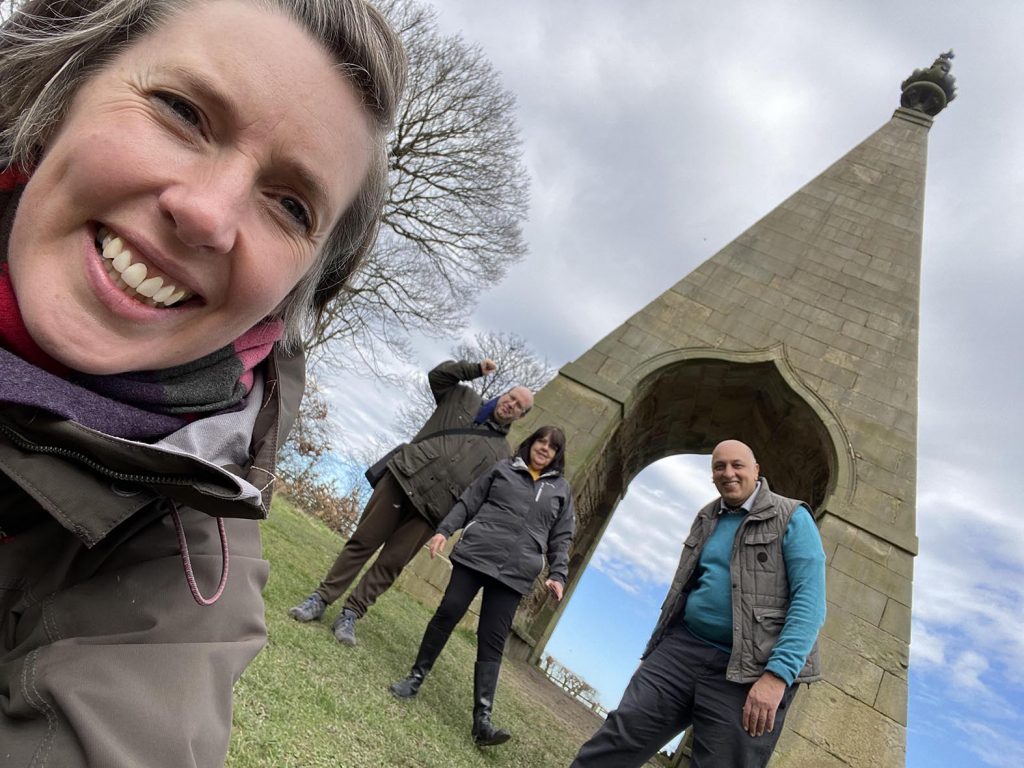This blog is about the making of Revealed Roots Concealed Connections which is an exhibition co-created with three front of house staff at Clifton Park Museum. Please take a moment to read about the project – that way this piece of writing will make much more sense. (Wow, that really is an extreme close-up!!!!)
—
Revealed Roots, Concealed Connections was a whirlwind adventure into the unknown for all those taking part: for me as the artist, for Clifton Park Museum and for the three front of house staff I worked with. This was the first time any of us had worked in this way, shaking up long-established working practices at the museum and recasting front of house staff as creators and curators.
As with many galleries and museums up and down the country, prior to this project the collections and archive teams would put together an exhibition around which would the learning and engagement programmes would be designed. Revealed Roots turned this on its head to challenge the traditional roles and boundaries within the museum and to reach into local communities via the front of house team.
There is currently much talk in the arts and culture sector about cultural democracy and co-creation and it’s something I’ve been keen to explore further in my practice: for whilst I often involve people in the making of my art works (see Skip Play Repeat, Consumption, Seat) it’s always been about them enabling me to deliver my artistic response to a place or my artistic vision. Revealed Roots was an opportunity for me to explore the idea of co-creation with three front of house staff to a realise number of new artworks together in response to Rotherham’s collection and archives. This meant I had to reflect deeply on my own working practices so I could clearly articulate and share these with others. Would this be possible? Would it even be interesting to them? And would I be able to put my control freakishness on hold??
Rotherham’s collection comprises a broad range of objects dating back to Roman times including world culture, social and industrial history, archaeology, natural sciences (including an inordinate amount of taxidermy!), paintings and ceramics. Objects have been bequeathed to the museum since its inception in 1893 by local aristocrats, industrialists, societies and individuals. In those days, it would have been the first time that Rotherham’s working classes would have seen objects from the past or from other cultures and must have been truly exhilarating.
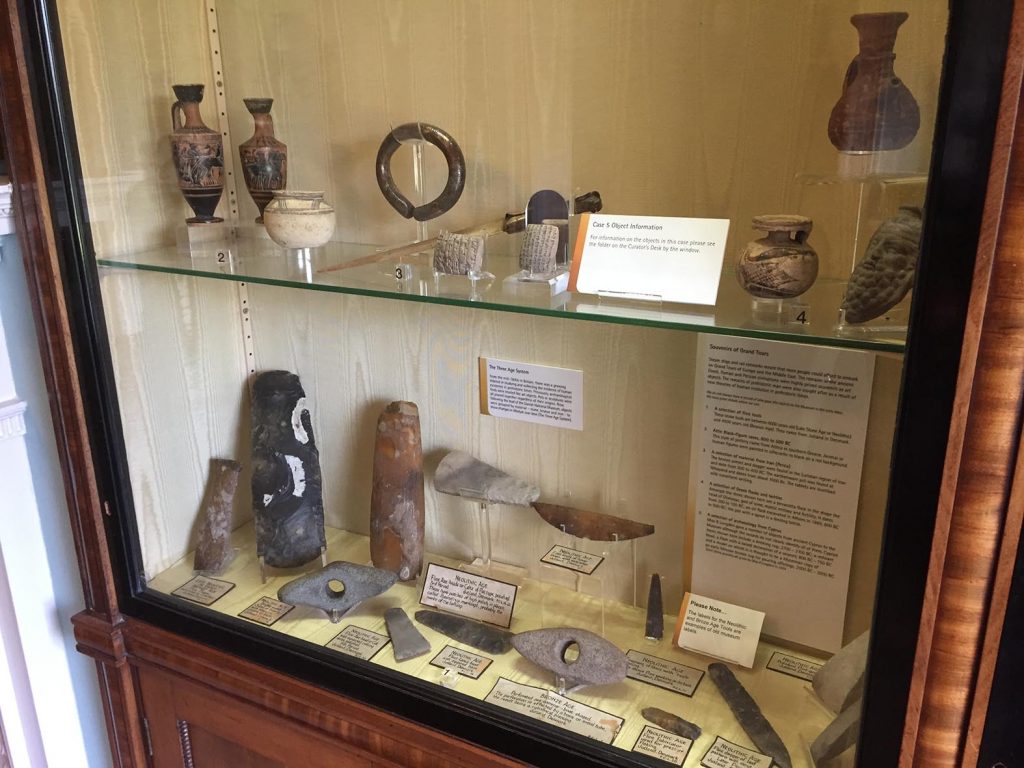
However, many of those objects have become disconnected from (or were never connected to) their stories. The result is collection of over 75,000 objects that all have to be stored and looked after. How do the objects connect to people in Rotherham today? How do we make sense of them? What can they tell us about who we are and where we come from? What’s more, whose stories are they telling and what’s missing?
Getting to know each other
The starting point for the project was the front of house staff: Angie and Zahid are both Visitor Experience Assistants and Dean a Hospitality Assistant from the Walker Café. Angie and Dean have lived in Rotherham all their lives and Zahid for 30 years after marrying a local lass. They all live in different parts of Rotherham and they all have different experiences of living in the town.
After an initial introductory session, we began by sharing our own personal stories and interests. I asked them all to bring objects from home that said something about who they are and that they’d feel happy talking about. Angie brought in photographs of her and her family dating back to when she was a child – nearly all the photos included pet dogs over the years. Dean brought in a whole host of objects including a various model ships, coins, books and photographs he’d taken of local landmarks. And Zahid brought in part of his uniform from his former security job.
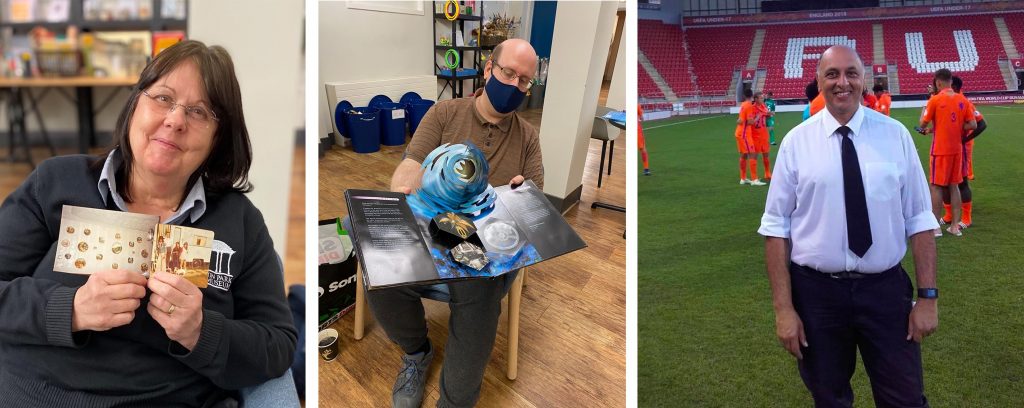
We also looked around the museum together for the first time as a group. As Visitor Experience Assistants, Angie and Zahid knew the museum and its exhibits well, whereas Dean had been working in the Walker Café for two and half years but hadn’t been into the actual museum since he was a child. None of them were aware of the behind-the-scenes stuff: they’d never been to the collection stores (which live in other buildings) and whilst they knew staff from collections and archives teams, they weren’t really aware of what they did on a day-to-day basis.
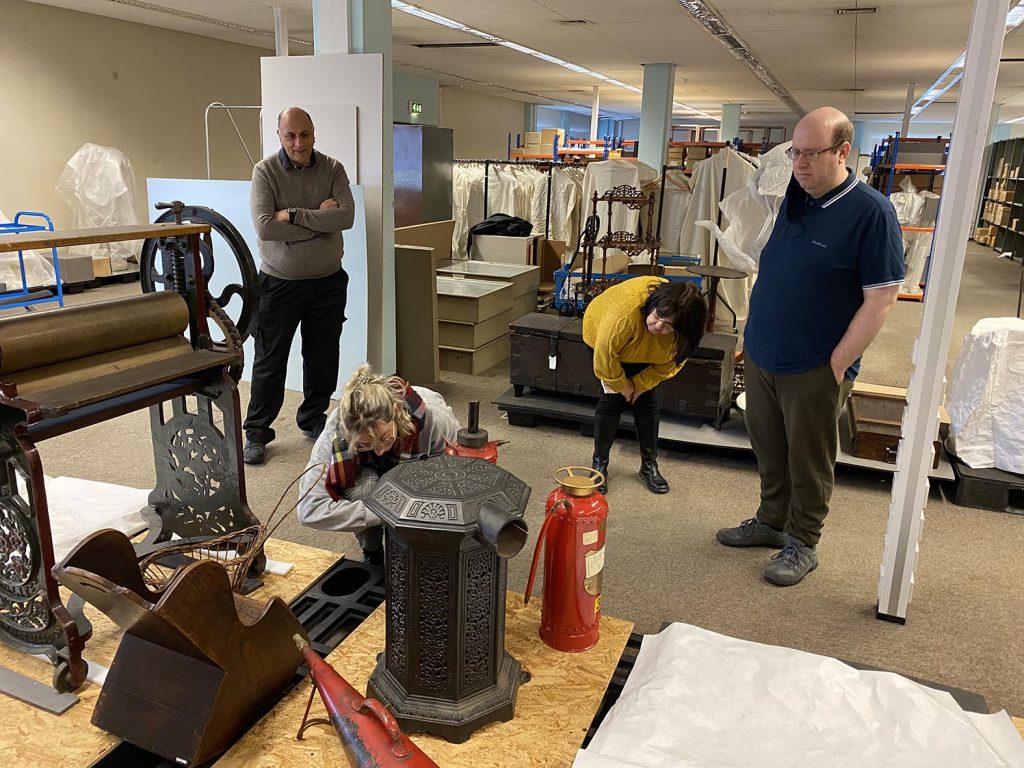
During the early stages of the project we made off-site visits to local landmarks including Hoober Stand and Needle’s Eye as well as to New York Stadium, the home of Rotherham United Football Club (RUFC). Zahid had been a Steward Supervisor there for many years, but it was the first time the rest of us had been there. Very impressive it was too!
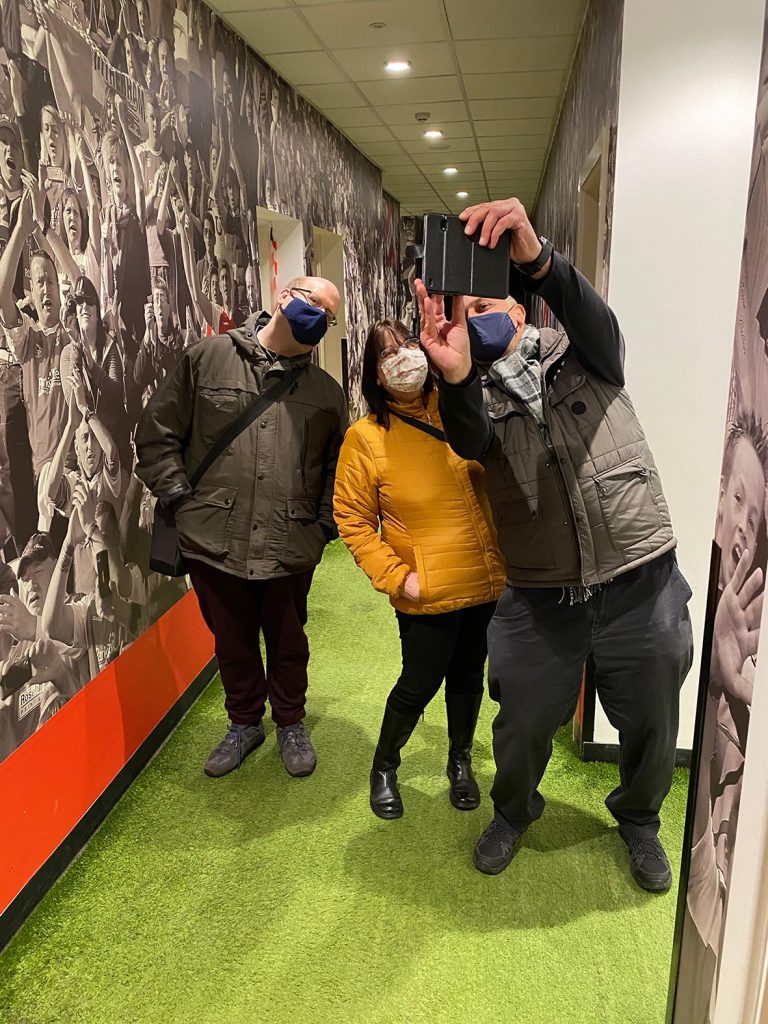
Research
After the initial ground work and getting to know each other, we began the research phase.
Firstly we learnt more about the collection and archives by spending time with staff who explained the process of cataloguing, object handling and storage, care and conservation. We also gained an insight into how the collections and archives departments complement each other and how the teams work together to put on displays for the public. There were some animated debates around copyright and historic evidence for objects we wanted to include in the exhibition but that ended up being excluded either because the council didn’t hold the copyright or because there simply wasn’t the historical evidence to justify it (fire hydrants Zahid!).
Secondly we enjoyed virtual studio tours with contemporary artists working with collections and museums. We were hoping to do these in real life, but due to Covid restrictions and studios being closed, these had to take place virtually (another new experience for our intrepid adventurers!). This was disappointing as there’s nothing like a road trip for a bit of bonding! However, we spoke to Catherine Bertola, Irene Brown, Simon Grennan and Susan Stockwell, all of whom were incredibly open about their practices and insights into how museums work and their role in the future. As Angie said afterwards, her thinking around Clifton Park Museum and the role of museums was already beginning to shift.
And lastly, all front of house staff researched their area of interest and were asked to present this back to the group. So Angie looked into the history of dog ownership, Dean into the history of Rotherham (including historic landmarks) and Zahid the history of RUFC and Guest & Chrimes.
Developing the work
All of this fed into a group ideation session, a concept introduced to me by Mark Lochrie from UCLAN during Skip Play Repeat. We gathered together of all Angie, Dean and Zahid’s research, photographs of their objects from home plus those relating to the collection and archives, info from our site visits and studio visits and displayed everything around the room. We then began to map these on huge sheets of paper chucking in any related thoughts, reflections, knowledge or ideas before teasing out connections, themes and concepts that excited us.

From here clear directions of travel emerged for each person. We presented our ideas back to the wider museum team for feedback, exploring what may or may not be possible within the available budget and timescale and brainstorming ideas for events and education programmes.
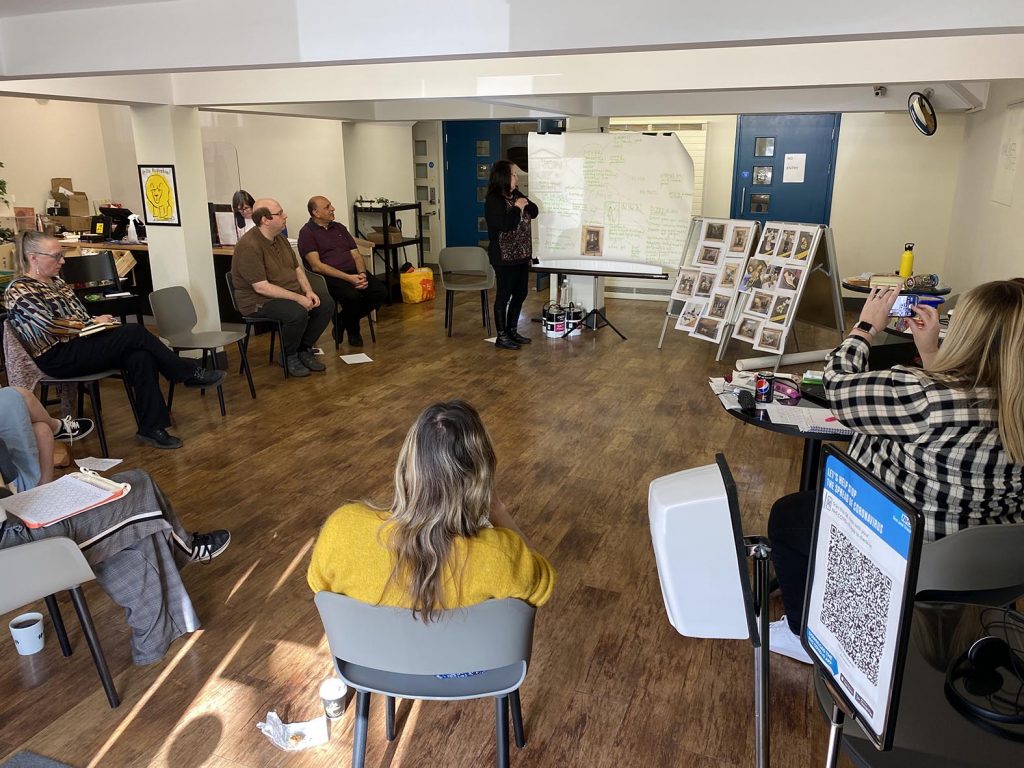
Some avenues closed down quickly such as our request to relocate the original painting of Joshua Walker from downstairs in the Ceremonial Room to an upstairs gallery where it would hang next a life size portrait of Angie and her dog Dexter. The painting was simply too fragile to move and there was neither the time nor the money to restore it ready for the exhibition opening. (Instead we had a life size replica created).
However, we were able to show 19 paintings of ships as part of Dean’s artwork despite some of them being in quite bad condition. Whilst we’d found hardly any objects relating to ships in the collection, we did find lots of paintings from the Nightingale bequest. We explored the idea of showing these in a different, non-linear way, so Dean decided to hang them in waves around the room, as if the ships were being tossed about on the sea. Dean got so into his creative groove that he even dared show one of them upside down! This was a great way to create new art out of old objects and a completely new way of hanging paintings in the museum.
As well as showing objects from the collection in unexpected ways, we also created new works in photography, sound, film and textiles: Zahid commissioned a replica factory workers outfit based on photographs and footage of the Guest & Chrimes brass workers from Meridith Towne, a Dressmaker and Costume Historian; and Dean’s collection of paintings were accompanied by and audio track featuring staff from across the museum service narrating excerpts from accounts of Rotherham people taking journeys on ships dating back to 1830. We were truly humbled that so many staff from across the museum contributed to Dean’s artwork in this way. It was a totally new experience for many of them and there’s nothing like a microphone being stuck in front of your face to set your nerves racing. We did however turn up a gem in Martin who really has quite the voice for radio!
Installation
Installing the show was a monumental effort by everyone across the museum with additional technical support from John Baxter, Ashley Green and Art AV. RUFC loaned loads of objects and all the suppliers pulled it out of the bag to deliver the show in an incredibly short space of time. A massive thanks to Chris Saunders, CC Imaging, Award Banners, LensGo Media, Kaptur, Rainforest Graphics and ROAR.
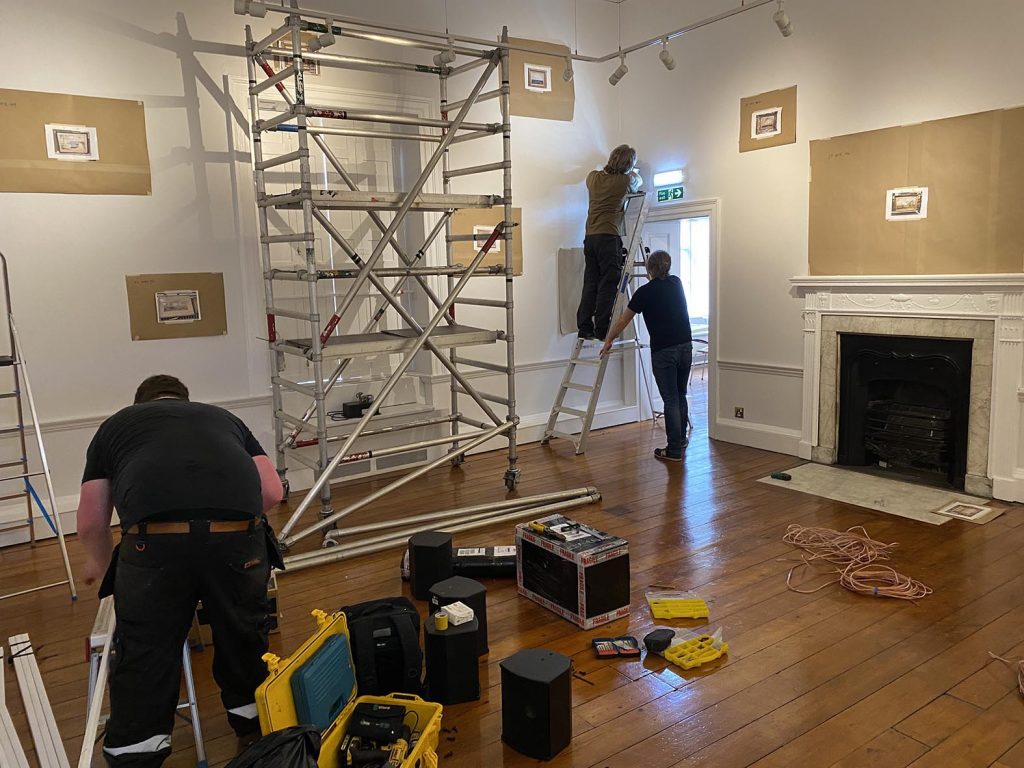
Preview
Well there wasn’t one! Due to Covid restrictions, sadly we weren’t able to hold a preview for Revealed Roots. I’d never really appreciated how important previews are in the arc of producing an exhibition: there was no opportunity to meet Angie, Dean and Zahid’s family and friends, stakeholders and funders; no way to publicly thank them and all the museum staff, partners, contractors and suppliers for their contributions and hard work; no opportunity to celebrate or socialise; no happen chance meetings; no networking.
However, the exhibition is up and continues until 6 February 2022.
Reflections
So was Revealed Roots a genuinely co-created project? I think so. We embarked on the process together, researching the collections and archives, pitching in ideas and suggestions, solving problems when they arose and changing tack accordingly, negotiating with different museum departments to try out new things. When I reflect on who’s responsible for which bit, it’s really hard to separate out who came up with what as the process was so fluid.
I am incredibly proud of what we made: not only all of the artworks are deeply rooted in Angie, Dean and Zahid’s own personal interests that reach into communities that perhaps have never have engaged with the museum before; but of the quality of the work which has given us all an enormous sense of pride. Co-creation has its roots in community or participatory art and sometimes there is an emphasis on process over product. I believe that both are equally important and that part of my role as artist to share my expertise in the making and displaying of new objects, to take my collaborators on a creative journey and to exceed their expectations of what is possible.
An example of this was the life-size portrait of Angie and her dog Dexter. The photograph was taken by a professional photographer and printed on the best fine art paper. The result is a stunning photograph of incredible detail, depth of field that is superbly lit and more than holds its own next to the painting of Joshua Walker. The sense of pride Angie feels seeing herself portrayed in this way is very moving, not least because it’s the first time she’d allowed anyone to take her picture in 30 years. Now she enjoys the same status as Joshua who built the house and will commemorated in print for future generations.
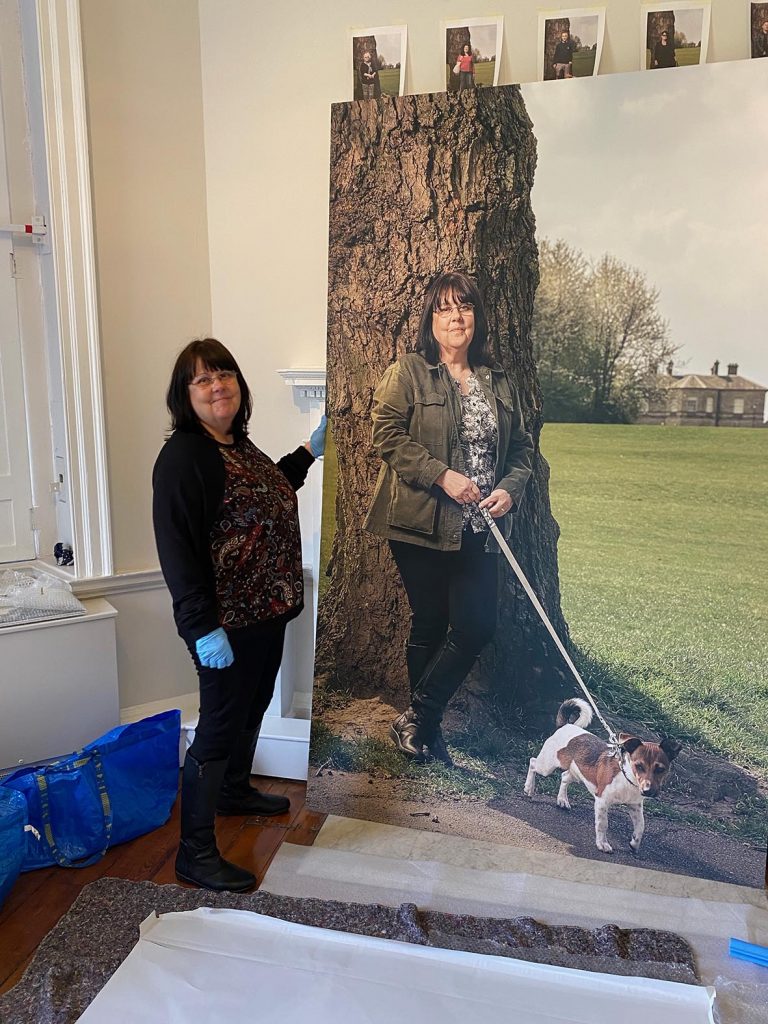
The future of regional museums
I really enjoyed doing this project with Clifton Park Museum and working with Angie, Dean, Zahid and all the different teams across the service. It can be daunting inviting artists into your organisation as we tend to ask lots of (difficult and awkward) questions, we like to poke around in the shadows and challenge the status quo. And because I proposed a process and not a solution, the senior leadership team really didn’t know what they were going to get at the end of it so it involved a leap of faith on their part. However, we have produced a great show over 7 rooms and engaged with audiences who had little or no connection to the museum before.
All museums need to demonstrate their value during these straightened times, but how do regional museums do this when they can’t command large numbers of national and international tourists? Has the model for galleries and museums changed in this Covid times? What Clifton Park Museum is doing is really exciting. They’ve been incredibly brave and totally shaken things up, challenging the traditional roles and boundaries within the institution to make it fit for purpose in the 21st century.
Regional museums have a unique role to place in our societies and to become social hubs for local people. Museum should be places for the conservation, sharing, learning and presentation of stories and objects of, with and for local people; places of new connection and friendship across age, ethnicity and class; places of creativity and experimentation; places to learn new skills, take risks and build confidence; places of belonging, wonder and joy.
Revealed Roots was the first step in Clifton Park Museum’s exciting journey and I look forward to seeing where they go next.
Revealed Roots is funded by Arts Council England and Rotherham Metropolitan Borough Council.
—
Robert Crawshaw shares some reflections on the role of museums and cultural literacy in his blog on the cle.eu website, using Revealed Roots as a case study.
https://cleurope.eu/category/blog/
—
Dean has written a short story ‘A Collection Of Storms’ inspired by his experience of taking part in the project and objects he selected from the Museum’s collection. You can listen to the story by clicking here – the sound file also includes a short interview with Dean.
